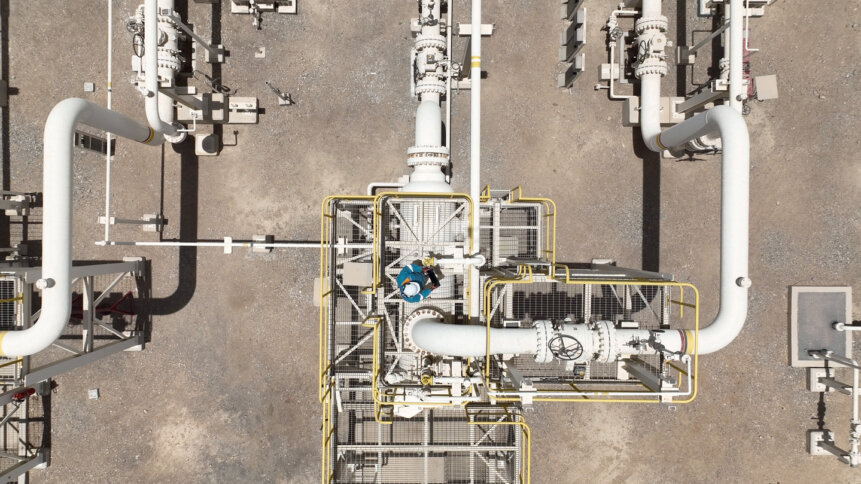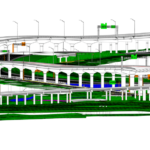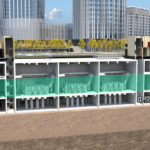Digital twins in power generation

|
Getting your Trinity Audio player ready...
|
Digital twins and the multiple overlapping data layers that can be used to lead up to them are changing the physical infrastructure of our world on a daily basis. At the recent Year In Innovation event in London from Bentley Systems, before the bleak midwinter set in, we took the opportunity to sit down with Allistair Stubbs, Vice President, Asset Operations for Bentley, and Richard Irwin, Senior Solutions Marketer, to discuss the ways in which digital twins were making an impact in the fundamental task of power generation and distribution.
THQ:
What are the big challenges in power generation? What are the most interesting things to tackle right now?
AS:
At the moment, the big challenge is the whole global economic and political situation, which is driving up fuel costs across the board. But off the back of that, there’s the coming together of two trends.
Trend one is a growing demand for power.
And trend two is that energy costs are going up as well.
But power generically is not evenly distributed, so for instance the UK is pretty well served with power, whereas for instance South Africa has got a deficit of power. So there’s not an even distribution globally, and obviously, if you look into other parts of Africa, or Asia, or developing countries, there’s even less power per head – so right now, there’s a lot of engineering going on to solve that problem.
That means there are a lot of new power stations being built, to increase power generation capacity, and we’re doing quite a bit of work around that with one of our partners, Siemens Energy, in putting in place maintenance practices for both new and existing power systems. And of course, we’re seeing a general switch in power generation across to renewables, which is getting a lot of relevant attention. Increasing offshore wind power generation, for example, and solar power generation – and that’s having an impact on the mining industry and the supply chain for the necessary minerals.
The whole story is surprisingly interconnected as we work to both ensure more equal distribution of power, increase the overall power available for distribution, and change from a previous heavily fossil fuel-dependent model to a multi-modal model that includes greener alternatives and nuclear – which we still need. The big challenge is not just within the power generation industry, but also includes the supply chain that goes on around it.
Where does the gas come from? Where does the oil come from? Coal is still used in India and China for a lot of power. So those supply chains are important. And then of course, once you’ve generated it, you’ve got to maintain the networks to supply it.
RI:
And then of course you have to be aware of regulatory compliance around the world, and sustainability. That’s a challenge across any industry.
The lights are going out…
THQ:
We’ll never just flippantly turn on a light again, now we know about the supply chains and logistics involved.
It feels like a whole sector that’s in significant but not necessarily smooth transition. Is that a fair assessment?
AS:
It’s a challenging time. After all, we’re sitting in London right now, and the UK is discussing the likelihood of a winter heating and electricity deficit this year, so I think we’re going to have to accelerate a number of initiatives around renewables and offshore wind, and particularly, I think we’re probably also going to see increasing interest in nuclear learning in the UK, for example, rebuilding power stations. Germany was going to shut them all down, but it’s actually delayed that shutdown now, at least until the spring, to help people get through this winter. That in itself is another interesting trend — the world is relearning how to do nuclear power. And because the engineers that did it originally are retired now, we’re learning how to do it again from fresh.
The many types of power.
THQ:
Bentley’s best known for its work with digital twins and data layers. What’s the company’s space within the power generation market? What are you looking to do?
AS:
We do quite a lot of work, and we can do quite a lot of work, around the development and upgrading of power plants, and particularly the use of digital twins to manage that process. In particular, there’s work we can do in hydroelectric plants. And through our partners at Seequent, we’re pretty active in geothermal power generation too, which is quite an interesting angle we’re exploring. And there are some interesting parallels there with the technology that’s used for oil and gas drilling. We’re slightly less active in the design of gas turbine power plants, but only because they’re a more manufacturing type of challenge, rather than a one-off development, which the majority of large-scale power plants are.
THQ:
Bentley’s quite active on the grid side of the power distribution equation, including allowing grid providers to track and manage their assets on a large scale. Does it do anything similar on the power generation side of the fence?
AS:
On the grid side, the transmission and distribution through the main transmission lines, and in open utilities for substations, and the actual distribution network management, yes, we’re pretty significant in that space. On the power stations themselves, the construction of those has probably got quite a lot of project-wise design tools, buildings and civil infrastructure around it that we’re active with. Asset tracking’s less of a thing on this side of the equation though.
With things like plant site where they’re trying to increase the building of twins, we’re beginning to see more of the maintenance and reliability wherever we deploy our products.
In terms of how we’ll see digital twinning particularly expanding in this sort of area, it’s really an enabling collaboration across two levels. One is inside an organization across different disciplines, bringing that information together, so everybody’s sharing and working from a common source. And the other is enabling better collaboration outside the organization. That could be within a supply chain, or it could be sharing information and knowledge across geographical boundaries, or regional areas or whatever, in terms of engineering input to problems or challenges or new designs and improvements.
And democratization of access to that data, that has previously been in either specialist tools or locked away in a particular discipline, is going to enable a lot of benefits, some of which we don’t even know yet.
In Part 2 of this article, we’ll explore more of the benefits of digital twins in power generation, and how data democratization may well hold the key to leveling up power generation – and power maintenance, especially in legacy systems as we both find new ways to do things, and discover why they were done the way they were in the past.










